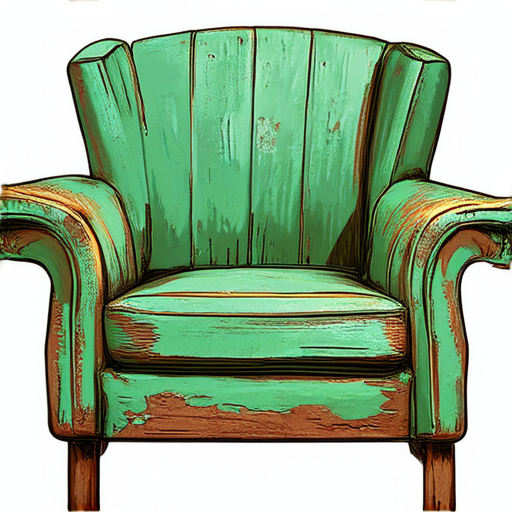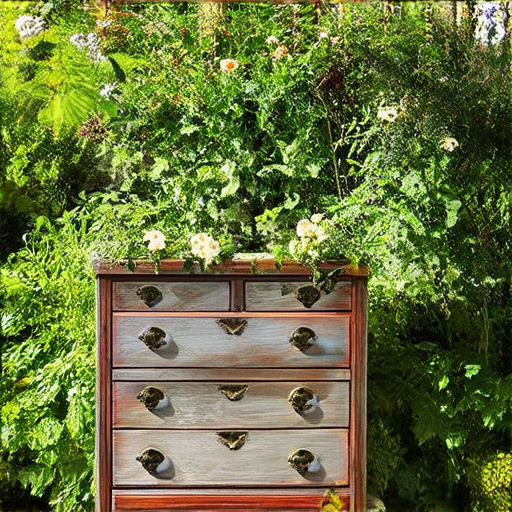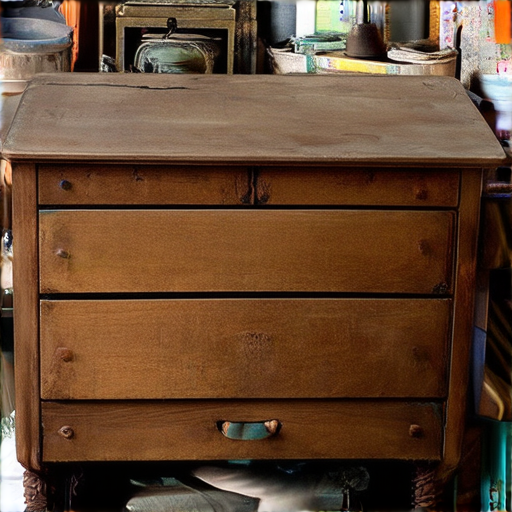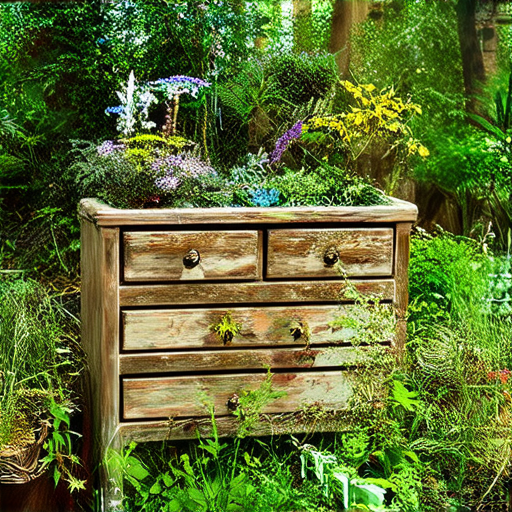Are you looking for creative ways to breathe new life into old furniture? With the rise of sustainable living and eco-friendly practices, upcycling has become a popular trend among homeowners and DIY enthusiasts alike. In this comprehensive guide, we’ll explore the world of upcycled furniture ideas, providing you with inspiration, tips, and tricks to transform discarded pieces into unique and functional pieces of art. From furniture to upcycle to repurposing furniture, we’ll cover everything you need to know to get started on your upcycling journey.

Upcycling for Beginners
We’re excited to share our passion for upcycling with you! At Pravylo Project, we believe that creativity knows no bounds, and with a little imagination, you can transform ordinary objects into extraordinary pieces.
- Start with the basics: Gather materials you’d otherwise throw away, such as old furniture, fabric scraps, or cardboard boxes. Think outside the box and consider what others might see as trash as potential treasures.
- Get inspired: Browse online platforms, social media, and local craft stores for upcycling ideas and techniques. Join communities of fellow creatives to learn from their experiences and gain valuable insights.
- Choose your project: Select an item you’d like to upcycle, considering factors like size, material, and complexity. Break down larger projects into manageable tasks to avoid feeling overwhelmed.
- Prepare your workspace: Clear a dedicated area for crafting, ensuring good lighting, comfortable seating, and necessary tools. Keep your workspace organized to minimize stress and maximize productivity.
- Experiment and have fun: Don’t be afraid to try new things and make mistakes – they often lead to unexpected breakthroughs! Enjoy the process, and remember that upcycling is a journey, not a destination.
Tips and Tricks
- Repurpose before recycling: Before discarding an item, think about how you can repurpose it. Ask yourself questions like “Can I reuse this?” or “What can I turn this into?”. Get creative and find innovative ways to breathe new life into discarded materials.
- Combine materials: Mix and match different textures, colors, and patterns to create unique and visually appealing pieces. Experiment with combining materials like wood, metal, glass, or fabric to add depth and interest to your creations.
- Pay attention to details: Focus on the small aspects of your project, such as texture, pattern, or color. These details can elevate your upcycled piece from ordinary to extraordinary.
- Document your progress: Take photos or videos of your upcycling journey to track your progress, share with friends, or showcase on social media. This will help you stay motivated and inspired throughout the process.
Getting Started with Upcycling
At Pravylo Project, we offer a variety of resources to help you get started with upcycling, including tutorials, workshops, and online courses. Visit our website for more information and join our community of creatives to connect with like-minded individuals who share your passion for upcycling.
Is Upcycled Furniture Still Popular?
As a DIY enthusiast and creative mind, I’m excited to share my thoughts on the current state of upcycled furniture.
- The trend shows no signs of slowing down, with many homeowners and designers continuing to seek out unique, sustainable pieces for their homes.
- In fact, upcycled furniture has become a staple in modern decor, offering a perfect blend of eco-friendliness, individuality, and aesthetic appeal.
Why Upcycled Furniture Remains Popular
- Sustainability: As concern for the environment continues to grow, people are looking for ways to reduce waste and live more sustainably. Upcycling old furniture fits perfectly into this mindset, allowing individuals to give new life to discarded items rather than sending them to landfills.
- Unique Style: Upcycled furniture often boasts one-of-a-kind character, making it a standout piece in any room. Whether it’s a vintage door turned coffee table or a reclaimed wood headboard, these pieces add a touch of personality to a space.
- Aesthetic Appeal: Let’s face it – upcycled furniture can be incredibly stylish! From distressed finishes to bold color schemes, these pieces offer endless opportunities for creative expression.
Pravylo Project’s Take on Upcycled Furniture
At Pravylo Project, we’re passionate about empowering our community to get creative with DIY projects and upcycled furniture. Our website offers a wealth of resources, including tutorials, inspiration, and project ideas to help you get started.
- Check out our DIY tutorials for step-by-step guides on upcycling furniture and other creative projects.
- Browse our inspiration section for stunning examples of upcycled furniture and decor.
- Explore our project ideas for innovative ways to repurpose old furniture and materials.
Competitors in the Upcycled Furniture Market
While there are several companies and websites focused on upcycled furniture, we believe that Pravylo Project stands out for its commitment to community engagement and creative empowerment.
- Hunker is a great resource for upcycled furniture inspiration and DIY tutorials.
- Apartment Therapy offers a wealth of advice on decorating and organizing small spaces, including upcycled furniture ideas.
Conclusion
In conclusion, upcycled furniture remains a popular choice among homeowners and designers due to its unique style, sustainability, and aesthetic appeal. At Pravylo Project, we’re committed to helping our community create beautiful, eco-friendly spaces through DIY projects and upcycled furniture. Join us today and start exploring the world of upcycled furniture!

How Profitable Is Upcycling Furniture?
Furniture upcycling can be a highly profitable venture, allowing individuals to earn extra income or even replace their current income.
- The process involves restoring and reselling used furniture, which can be a great way to build up capital to start an online business or e-commerce platform.
- With the rise of sustainable living and eco-friendly practices, the demand for upcycled furniture has increased significantly, making it a lucrative opportunity for those willing to invest time and effort.
Benefits of Upcycling Furniture:
- Environmental Benefits: Upcycling reduces waste and promotes sustainability, making it an attractive option for environmentally conscious consumers.
- Cost-Effective: Upcycling allows individuals to create unique pieces at a lower cost compared to buying new furniture, making it an attractive option for budget-conscious buyers.
- Increased Value: Upcycled furniture often retains its original character and charm, increasing its value and appeal to potential buyers.
Popular Platforms for Selling Upcycled Furniture:
- eBay
- Etsy
- Craigslist
- Facebook Marketplace
Tips for Successful Upcycling:
- Research Popular Trends: Stay updated on popular design trends and styles to increase the chances of selling upcycled furniture quickly.
- Invest in Quality Materials: Use high-quality materials and tools to ensure that the upcycled piece is durable and long-lasting.
- Highlight Unique Features: Emphasize the unique features and characteristics of the upcycled piece to attract potential buyers.
Conclusion:
Upcycling furniture can be a profitable and rewarding venture, offering numerous benefits for both the environment and the wallet. By staying informed about popular trends, investing in quality materials, and highlighting unique features, individuals can increase their chances of success in the upcycling market.

Choosing the Best Paint for Upcycling Furniture
I’m excited to share my knowledge on selecting the perfect paint for giving old furniture a fresh new look.
-
Acrylic Paint: A Versatile Option
- Dries quickly
- Easy to clean up
- Wide range of colors and finishes available
-
Latex Paint: A Water-Based Alternative
- Easy to apply and smooth out
- Low odor and fumes
- Available in a variety of sheens and colors
-
Chalk Paint: A Unique Finish
- No sanding required
- Easy to distress and age
- Available in a range of colors and finishes
-
Milk Paint: A Natural Choice
- Natural, non-toxic ingredients
- No strong odors or fumes
- Available in a range of colors and finishes
- Assess the Condition of the Existing Finish: Check if the existing paint job is in good condition and has a smooth finish. If it does, you can proceed with painting over it. However, if the finish is rough or peeling, it may be necessary to sand it down first.
- Sand the Surface: Use a fine-grit sandpaper (220 grit) to lightly sand the surface of the furniture. This will help create a better bond between the old paint and the new coat.
- Choose the Right Paint: Select a high-quality paint specifically designed for furniture, and choose a color that complements the original finish.
- Prime the Surface (Optional): If the existing paint is particularly stubborn or uneven, consider applying a primer to ensure a smooth finish.
- Apply Multiple Thin Coats: To achieve a professional-looking finish, apply multiple thin coats of paint, allowing each coat to dry completely before adding the next.
- Seal with a Clear Coat: Once the final coat of paint is dry, apply a clear coat to protect the finish and make future cleaning easier.
- Test the Paint: Before committing to a full paint job, test the paint on a small, inconspicuous area to ensure the color and finish meet your expectations.
- Consider the Type of Paint: Different types of paint (latex, oil-based, etc.) have varying properties and requirements. Choose the right type of paint for your project based on the surface material and desired finish.
- Don’t Forget to Clean Up: After completing the paint job, thoroughly clean your tools and workspace to prevent any messes or accidents.
-
Step 1: Gather Materials and Plan Your Project
-
Step 2: Clean and Disassemble the Piece
-
Step 3: Sand and Prepare the Surface
-
Step 4: Apply a New Finish
-
Step 5: Reassemble and Add Final Touches
- Always work in a well-ventilated area when using chemicals or power tools.
- Use protective gear, such as gloves and safety glasses, to prevent injury.
- Consider repurposing old hardware or finding creative ways to reuse existing components.
- Don’t be afraid to experiment and try new things – upcycling is all about thinking outside the box!
- Hunker’s Upcycling Ideas for Furniture
- Apartment Therapy’s Upcycling Wooden Furniture Ideas
- ThriftyFun’s Upcycling Old Furniture Guide
Acrylic paint is a popular choice for upcycling furniture due to its versatility and ease of use. It can be applied to various surfaces, including wood, metal, and plastic, making it an ideal option for those looking to give new life to old pieces.
Latex paint is another excellent option for upcycling furniture. It’s water-based, making it easier to clean up and less likely to cause damage to surrounding surfaces.
Chalk paint is a specialized type of paint that provides a unique, textured finish. It’s perfect for those looking to add a vintage or distressed look to their upcycled furniture.
Milk paint is a natural, eco-friendly option for upcycling furniture. It’s made from milk protein and is free from harsh chemicals, making it a great choice for those looking for a sustainable solution.
When choosing the best paint for upcycling furniture, consider factors such as durability, ease of application, and the desired finish. By selecting the right paint for the job, you’ll be able to achieve professional-looking results and breathe new life into old pieces.
Painting Over Painted Furniture
When it comes to painting over painted furniture, there are several factors to consider before making a decision.
Remember to work in a well-ventilated area, and always follow safety precautions when working with paint and chemicals.
Tips and Considerations:
Additional Resources:
For more information on painting techniques and furniture restoration, check out our Furniture Restoration Tips guide.

Upcycling Wooden Furniture for Beginners
We’re excited to share our expertise on upcycling wooden furniture, a fun and creative way to breathe new life into old pieces.
Start by collecting the wooden furniture piece you want to upcycle, along with any necessary tools and materials, such as paint, stain, or varnish. Research different design ideas and plan your project accordingly.
Thoroughly clean the furniture piece to remove dirt, grime, and old finishes. Disassemble any removable parts, such as drawers or shelves, to give yourself better access to the surface area.
Sand the entire surface of the furniture piece to smooth out any rough spots and create a stable base for painting or staining. Wipe away any dust or debris with a tack cloth.
Choose a finish that suits your desired look and apply it according to the manufacturer’s instructions. Consider using eco-friendly options, such as water-based paints or stains, to minimize environmental impact.
Reattach any disassembled parts and add any final decorative touches, such as hardware or upholstery. Stand back and admire your newly upcycled creation!
Tips and Tricks:
Get Inspired:
Check out these amazing upcycling projects for inspiration and motivation:
Join Our Community:
Share your upcycling creations and connect with fellow DIY enthusiasts on our social media channels:

0 Comments